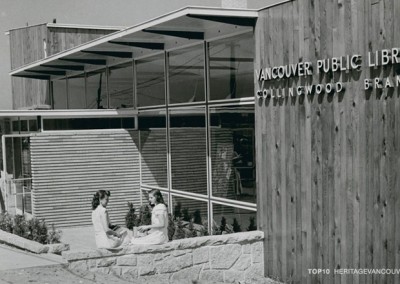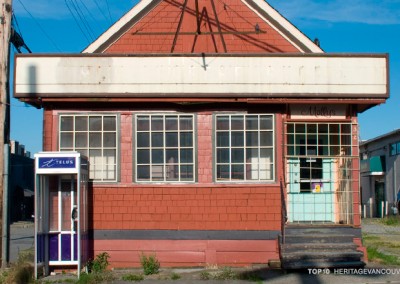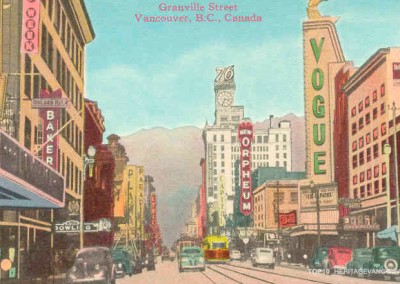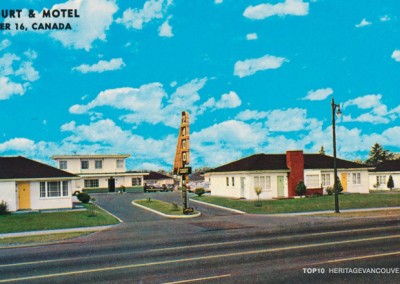7455 Ontario Street, at West 59th Avenue
Sexsmith School illustrates another threat to historic Vancouver Schools – redundancy. A new school will be being constructed beside the old one, with no guarantee of the future of the original building. This is exactly what happened at Charles Dickens School, which was eventually demolished. Sir James Douglas Elementary School is in exactly the same situation.
Threat
What is the threat to the Sexsmith Elementary School?
The original Sexsmith School buildings, the original small frame building dating from 1912 and the main building from 1913, will be vacated by the Vancouver School Board, as soon as the replacement school complex is completed in about two years. The new school is being built immediately to the west of the existing rear playground, on West 59th Avenue at Columbia Street.
The existing wood frame construction of the historic structures can be successfully upgraded for seismic requirements without altering the main profile of the schools. The VSB has chosen to build a new school, ignoring the unique and irreplaceable features of the existing school. Improvement in academic and community spaces would be possible within the existing structures through creative rehabilitation and adaptive reuse.
The existing buildings will be demolished unless new uses are found for these valuable heritage structures. The Vancouver School Board is not maintaining or renovating the existing 1912 and 1913 structures, making it difficult to attract new users. The Vancouver School Board has a poor track record, as seen at Charles Dickens and Carleton Hall, in making agreements with new users.
Sir James Douglas Elementary School is facing the same future, and will be vacated as soon as the new school is completed.
Once the buildings are vacant, they will deteriorate quickly unless rigorously maintained, thus becoming a hazard and liability for new potential users. After deterioration, the cost of renovation and rehabilitation increases dramatically and therefore is far less attractive to potential applicants. With no plan or provision to accommodate potential new users, these buildings will stay vacant until its demolition is inevitable as was the case of Charles Dickens.
Landscaping is also important at the Sexsmith School site. It will be difficult to maintain mature trees in front of the new school during construction. The orientation of the new building will change the existing geometry of the site and compromise the school’s prominent standing in the community along with its cultural and historical value. A set of mature trees is one of the important formal expressions of a public institution; the threat to these trees represents a loss of public identity for this important community landmark.
Significance
Why is Sexmith School significant?
J.W. Sexsmith Elementary School originally opened in 1912, in the small yellow and white painted wood frame structure, which is still standing today at the northeast corner of the schoolyard. The 1912 building is typical of the early small schools in Vancouver, and is still in good condition, although it is currently not used for school classes.
The following year (1913), the imposing red brick school was opened. The form and materials are similar to several other elementary schools, which were built from 1910 to 1913 to accommodate the rapidly growing population of Vancouver and South Vancouver. The building is closely related to Sir James Douglas Elementary School, designed by architect Joseph Bowman for a prominent site at 7550 Victoria Avenue. Coincidently, the future of this heritage school is also in jeopardy, since it too will be replaced shortly.
The 1913 building comprises 2 floors of classrooms above a basement level, originally used for the common playrooms and service spaces. These are arranged in a symmetrical “classical” form with a central entry and stairs, under a triangular pediment, flanked by the classrooms, which are covered by a high gable roof. Even today, the school is visible from a distance over the roofs of the surrounding houses.
Poured concrete additions were added on both sides of the brick building in 1951, 1952 and 1962. Although the bland style of the flanking additions is unrelated to the Classical Revival style of the original, it allows the old brick building to dominate the front elevation of the school along Ontario Street. It defines a broad, attractive paved, and partially treed playground, which leads up to the school’s main entrance.
The school is in an unusually open park-like setting. It borders on Langara Golf Course to the north, which extends from Ontario to Cambie Street. It is set back from both Ontario and 59th Streets, with attractive trees along both streets and distant views of the tall trees in the golf course. The green expanse of Winona Park is a short distance west on 59th Street.
The school has an important place in the early history of the Vancouver region. In fact,
one source states that Sexsmith School is one of the first, if not the first, of the strictly rural schools established in mainland British Columbia. In 1912, most of the surrounding area was “rural”, with scattered settlements, at some distance from the commercial streets such as Main Street and separated by a few kilometres of fields and woods from the village of Marpole on the Fraser River.
The school was one of the first in the new municipality of South Vancouver. The border between Vancouver and South Vancouver was 16th Street, as far east as Main Street, running down to King Edward and then stepping north and east to include the existing communities of Cedar Cottage and Collingwood.
By 1908, the western half of South Vancouver had split off to become Point Grey. The revised South Vancouver therefore extended east from Cambie to the Burnaby border. As the population spread out from the existing northern neighbourhoods, South Vancouver grew from 5,000 in 1909 to 15,000 in 1910 and doubled again before 1920. In 1929, the municipality merged with the City of Vancouver.
The growing population was predominantly working class, attracted by smaller lots and more affordable housing. With the arrival of waves of immigrants to the region after WW2, the area became home to an ever-wider variety of people, with the result that the school states that 90% of the current students are from families with a first language that is not English. This ever-changing population has been unified and very well served by their community school for almost 100 years.
Position
Heritage Vancouver’s Position
Although the adjoining new school will soon open, it is unacceptable that the community could lose these two historic buildings.
The Vancouver School Board must make every possible effort to find a fitting use for these structures and the fine open playground on which they are so well sited. These heritage buildings can create a stimulating contrast with some exceptional modern public buildings located nearby. These include the striking new Sunset Community Centre by Bing Thom Architects and the award-winning Library and Classroom Buildings at Langara College.
Heritage Vancouver believes that a community that is so fortunate to have fine 21st century public buildings, also deserves to have a record of its early 20th century heritage preserved. If it is feasible to produce a seismic upgrade to the entire U-shaped complex comprising the 1913 brick building with the 1950-1962 flanking concrete wings, this should be done. At the very least, if saving the concrete wings is not cost-effective, the brick school should be upgraded and restored to its original character.
Heritage Vancouver also supports the maintenance of the existing landscaping, especially the mature trees along both streets.
Updates
Update February 2016: Lost. The main brick school, along with the earlier one-room wooden school (NE corner) have been demolished, due to being classed as surplus, now that a new school has been built on the site. No effort was made towards even retaining the earlier single-room wooden schoolhouse on the site.
![3. Vancouver Schools – J.W. Sexsmith Elementary School (1912 & 1913) [lost]](http://heritagevancouver.org/wp-content/uploads/2011/09/HVS-Top10-795x440-sexsmith-school1.jpg)

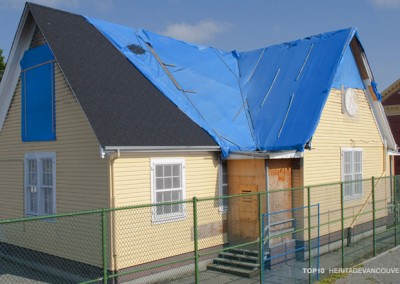
![2. Vancouver Schools: Kitchener Elementary (1914 & 1924) [lost]](http://heritagevancouver.org/wp-content/uploads/2011/11/HVS-Top10-795x440-kitchener-400x284.jpg)
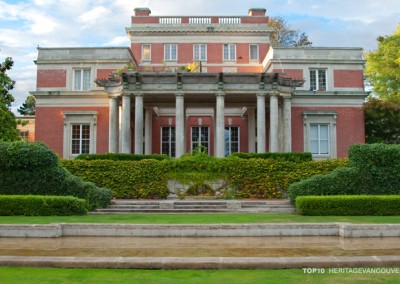
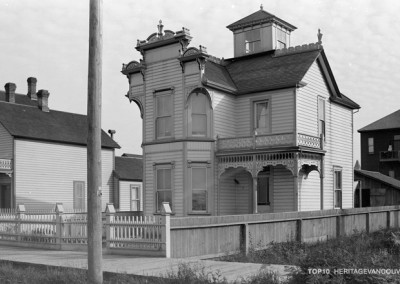
![6. Gordon T. Legg Residence (1899) [lost]](http://heritagevancouver.org/wp-content/uploads/2015/02/2013-west-end-heritage-400x284.jpg)
